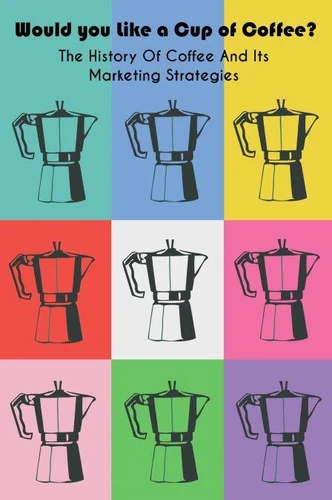Would you Like a Cup of Coffee? The History Of Coffee And Its Marketing Strategies
Par :Formats :
Disponible dans votre compte client Decitre ou Furet du Nord dès validation de votre commande. Le format ePub est :
- Compatible avec une lecture sur My Vivlio (smartphone, tablette, ordinateur)
- Compatible avec une lecture sur liseuses Vivlio
- Pour les liseuses autres que Vivlio, vous devez utiliser le logiciel Adobe Digital Edition. Non compatible avec la lecture sur les liseuses Kindle, Remarkable et Sony
 , qui est-ce ?
, qui est-ce ?Notre partenaire de plateforme de lecture numérique où vous retrouverez l'ensemble de vos ebooks gratuitement
Pour en savoir plus sur nos ebooks, consultez notre aide en ligne ici
- FormatePub
- ISBN978-1-393-10627-2
- EAN9781393106272
- Date de parution07/08/2021
- Protection num.pas de protection
- Infos supplémentairesepub
- ÉditeurRelay Publishing
Résumé
Coffee is made from the coffee plant's roasted and ground seeds, or beans, a tropical evergreen shrub. Coffee contains large amounts of caffeine, whose effects have always been an essential element in the drink's popularity. Coffee is consumed by about one-third of the world's population. Today coffee and other caffeinated beverages are a regular part of everyday life. The chemical reactions in the brain caused by caffeine are extreme.
When people begin to feel tired or sleepy, adenosine molecules floating around in the brain. This book will help readers learn the history and see how the many different historical and cultural influences affected coffee advertisements differently throughout the centuries.
When people begin to feel tired or sleepy, adenosine molecules floating around in the brain. This book will help readers learn the history and see how the many different historical and cultural influences affected coffee advertisements differently throughout the centuries.
Coffee is made from the coffee plant's roasted and ground seeds, or beans, a tropical evergreen shrub. Coffee contains large amounts of caffeine, whose effects have always been an essential element in the drink's popularity. Coffee is consumed by about one-third of the world's population. Today coffee and other caffeinated beverages are a regular part of everyday life. The chemical reactions in the brain caused by caffeine are extreme.
When people begin to feel tired or sleepy, adenosine molecules floating around in the brain. This book will help readers learn the history and see how the many different historical and cultural influences affected coffee advertisements differently throughout the centuries.
When people begin to feel tired or sleepy, adenosine molecules floating around in the brain. This book will help readers learn the history and see how the many different historical and cultural influences affected coffee advertisements differently throughout the centuries.



